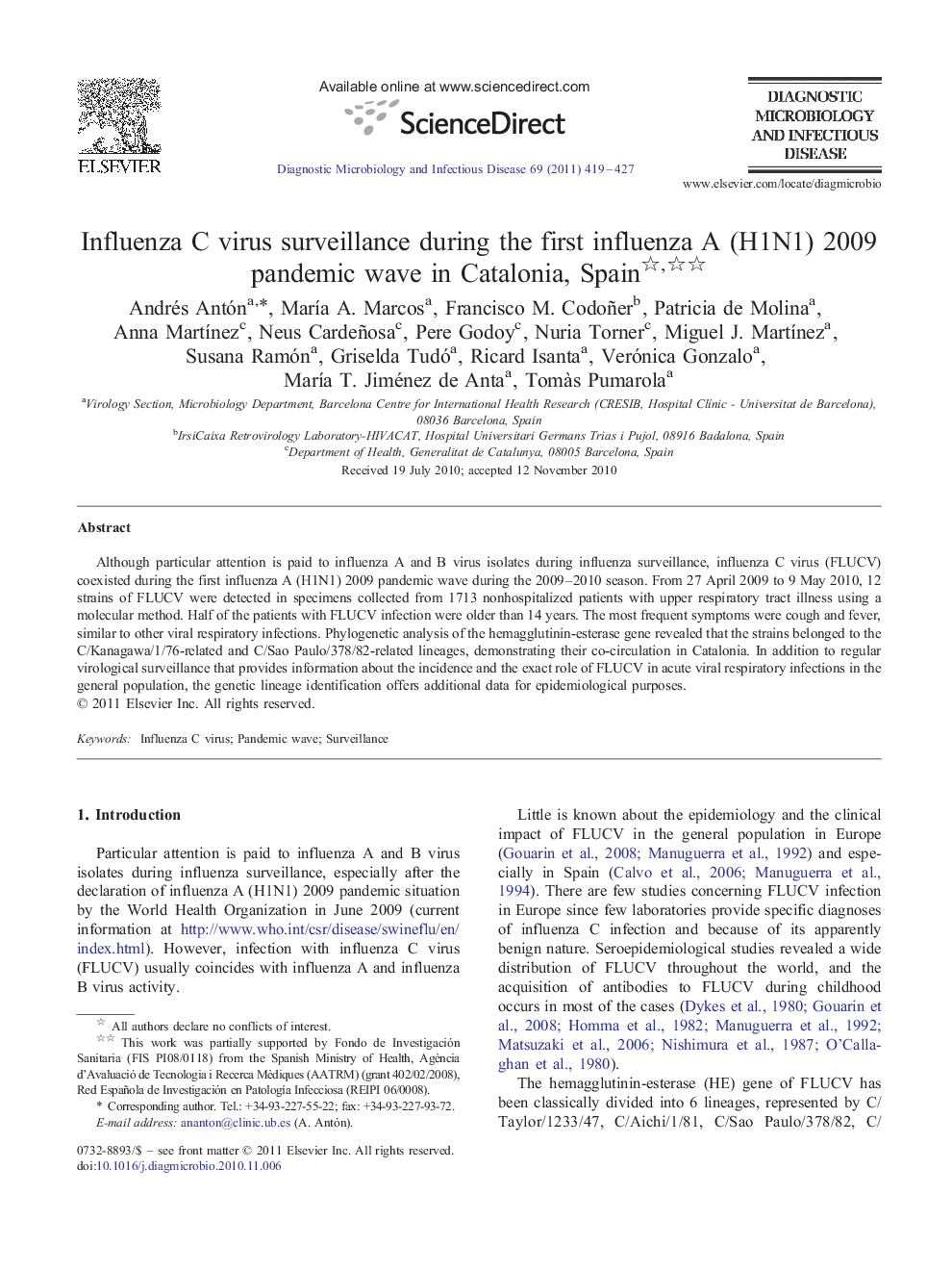| Article ID | Journal | Published Year | Pages | File Type |
|---|---|---|---|---|
| 3347387 | Diagnostic Microbiology and Infectious Disease | 2011 | 9 Pages |
Although particular attention is paid to influenza A and B virus isolates during influenza surveillance, influenza C virus (FLUCV) coexisted during the first influenza A (H1N1) 2009 pandemic wave during the 2009–2010 season. From 27 April 2009 to 9 May 2010, 12 strains of FLUCV were detected in specimens collected from 1713 nonhospitalized patients with upper respiratory tract illness using a molecular method. Half of the patients with FLUCV infection were older than 14 years. The most frequent symptoms were cough and fever, similar to other viral respiratory infections. Phylogenetic analysis of the hemagglutinin-esterase gene revealed that the strains belonged to the C/Kanagawa/1/76-related and C/Sao Paulo/378/82-related lineages, demonstrating their co-circulation in Catalonia. In addition to regular virological surveillance that provides information about the incidence and the exact role of FLUCV in acute viral respiratory infections in the general population, the genetic lineage identification offers additional data for epidemiological purposes.
